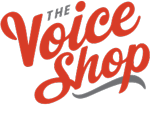Voice over recording is conducted in a variety of places and settings, even at home. To achieve a quality remote recording, you need quality equipment and a quiet space without distractions. A common misconception is it will be expensive and require advanced technical knowledge to configure and connect. The reality is recording VO remotely in your home is inexpensive and in practice now more than ever.
Keep Calm & Gear Up:
“Voice over equipment for your home recording can be practical and affordable,” states Creative Media Design’s audio engineer, Rob Hann. “You’ll need several items, including a microphone, headphones, and software to perform voiceovers at home. Here are some recommendations and tips to get you started.”
Headphones: Sony MDR-7506 Headphones $99.95
“You should use over-the-ear headphones, NOT ear-pods. You must be able to hear what the producers are saying while recording. With this type of headphone, you will not have “bleed” from producers during the recording, which comes through the headphones. Avoid Bluetooth headphones; there is a delay in the audio signal.”
Microphone: Rhode NT-USB Condenser Microphone $169 (“not the mini version”)
“Look for a large-diaphragm condenser microphone. The older XLR connection will require additional equipment; however, many modern mics use USB to plug into the computer.”
Microphone Stand: Amazon Tripod Stand $17.54
“You’ll want a full-length stand. Voice talent should be standing. When sitting, you are not using your full diaphragm. Standing provides a better tone and more voice control.”
Music Stand: Amazon Music Stands ($11 to $40+)
“A music stand will hold an iPad or printed script and free up hands while performing VO.”
Software: Pro Tools $299 to $599 Garage Band (free with Mac) Audacity (freeware)
“Pro Tools is the industry standard; however, Garage Band and Audacity will work. No matter which software you choose, you must use a computer, not an iPhone or iPad. They do not have the speed, computing power, or connectability required for remote recording.”
Remote Connection Software: Source Connect (free)
“Source Connect is free software that allows remote voice over artists to connect to people around the world. Use Google Chrome to access Source Connect.”
Quality gear and the right type of software are necessary to record quality audio in your home remotely.
Home Is Where The VO Is:
After the audio gear is purchased, an appropriate space for home recording is required. “Start by finding the quietest room in the house free from external noise,” states Hann. “Usually, it will be an interior room and without hardwood floors. A bedroom with carpet has fewer reflective surfaces for recording quality audio. A walk-in closet is an ideal place, but if you don’t have a walk-in closet, put the mic in the closet, surround it with clothing to deaden the reflective noise, and speak into the closet from the room.”
“To start recording, you should be standing up with your mouth about 1 to 1 ½ feet from the mic, so you are speaking at the same height level as the mic. Make sure any people in the house know that you’re recording, and they need to be quiet and not disturb the process. When recording, let the producer know if a truck or plane goes by your home so you can start recording again without the external noise.”
Voice over audio production can be achieved in almost any home with the right gear, software, and recording space. If you need help with your VO projects, CMD can assess your recording setup, review your recording process, and provide casting services and VO production. Contact us at info@cmdnyc.com











